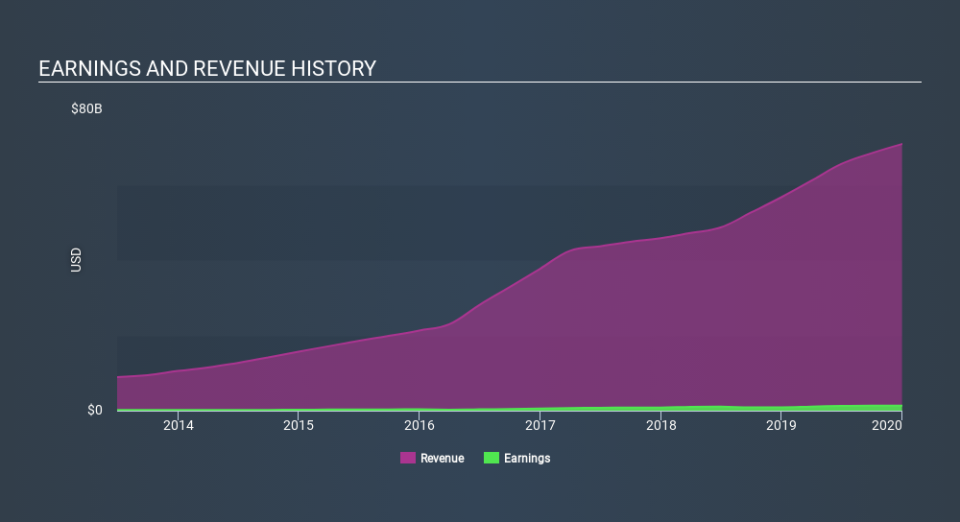Centene Corporation's (NYSE:CNC) Earnings Grew 47%, Did It Beat Long-Term Trend?

In this article, I will take a look at Centene Corporation's (NYSE:CNC) most recent earnings update (31 December 2019) and compare these latest figures against its performance over the past few years, along with how the rest of CNC's industry performed. As a long-term investor, I find it useful to analyze the company's trend over time in order to estimate whether or not the company is able to meet its goals, and eventually grow sustainably over time.
View our latest analysis for Centene
Could CNC beat the long-term trend and outperform its industry?
CNC's trailing twelve-month earnings (from 31 December 2019) of US$1.3b has jumped 47% compared to the previous year.
Furthermore, this one-year growth rate has exceeded its 5-year annual growth average of 32%, indicating the rate at which CNC is growing has accelerated. How has it been able to do this? Let's see whether it is solely because of industry tailwinds, or if Centene has experienced some company-specific growth.
In terms of returns from investment, Centene has fallen short of achieving a 20% return on equity (ROE), recording 10% instead. Furthermore, its return on assets (ROA) of 4.2% is below the US Healthcare industry of 5.2%, indicating Centene's are utilized less efficiently. And finally, its return on capital (ROC), which also accounts for Centene’s debt level, has declined over the past 3 years from 14% to 9.1%. This correlates with an increase in debt holding, with debt-to-equity ratio rising from 47% to 107% over the past 5 years.
What does this mean?
Though Centene's past data is helpful, it is only one aspect of my investment thesis. While Centene has a good historical track record with positive growth and profitability, there's no certainty that this will extrapolate into the future. I recommend you continue to research Centene to get a better picture of the stock by looking at:
Future Outlook: What are well-informed industry analysts predicting for CNC’s future growth? Take a look at our free research report of analyst consensus for CNC’s outlook.
Financial Health: Are CNC’s operations financially sustainable? Balance sheets can be hard to analyze, which is why we’ve done it for you. Check out our financial health checks here.
Other High-Performing Stocks: Are there other stocks that provide better prospects with proven track records? Explore our free list of these great stocks here.
NB: Figures in this article are calculated using data from the trailing twelve months from 31 December 2019. This may not be consistent with full year annual report figures.
If you spot an error that warrants correction, please contact the editor at editorial-team@simplywallst.com. This article by Simply Wall St is general in nature. It does not constitute a recommendation to buy or sell any stock, and does not take account of your objectives, or your financial situation. Simply Wall St has no position in the stocks mentioned.
We aim to bring you long-term focused research analysis driven by fundamental data. Note that our analysis may not factor in the latest price-sensitive company announcements or qualitative material. Thank you for reading.

 Yahoo Finance
Yahoo Finance 
